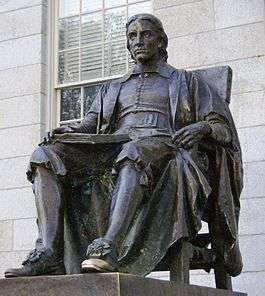Harvard University Press
 | |
| Parent company | Harvard University |
|---|---|
| Founded | January 13, 1913 |
| Country of origin | United States |
| Headquarters location | Cambridge, Massachusetts |
| Key people |
William P. Sisler (director) Susan Wallace Boehmer (editor-in-chief) |
| Publication types | Academic publishing |
| Imprints | Belknap |
| Official website |
www |

Harvard University Press (HUP) is a publishing house established on January 13, 1913, as a division of Harvard University, and focused on academic publishing.[1] In 2005, it published 220 new titles. It is a member of the Association of American University Presses. Its current director is William P. Sisler and the editor-in-chief is Susan Wallace Boehmer.
The press maintains offices in Cambridge, Massachusetts, near Harvard Square, in New York City, and in London, England.
Notable authors published by HUP include Eudora Welty, Walter Benjamin, E. O. Wilson, John Rawls, Emily Dickinson, Stephen Jay Gould, Helen Vendler, Carol Gilligan, Amartya Sen, David Blight, Martha Nussbaum, and Thomas Piketty.
The Display Room in Harvard Square, dedicated to selling HUP publications, closed on June 17, 2009.[2]
Related publishers, imprints, and series
HUP owns the Belknap Press imprint, which it inaugurated in May 1954 with the publication of the Harvard Guide to American History.[3] The John Harvard Library book series is published under the Belknap imprint.
Harvard University Press distributes the Loeb Classical Library and is the publisher of the I Tatti Renaissance Library, the Dumbarton Oaks Medieval Library, and the Murty Classical Library of India.
It is distinct from Harvard Business Press, which is part of Harvard Business Publishing, and the independent Harvard Common Press.
Political ideologies
A 2011 study of the books published by Harvard University Press during the 2000–2010 period and connected to political ideology found that, out of 494, only eight "had an outlook that was conspicuously either classical liberal or conservative".[4][5]
See also
- Category:Harvard University Press books
References
- ↑ "As Many Books as Possible Short of Bankruptcy". Harvard Magazine. March–April 2013. Retrieved January 28, 2015.
- ↑ "Last Chapter". Harvard Magazine. September–October 2009. Retrieved December 2, 2010.
- ↑ Bridenbaugh, Carl (May 9, 1954). "For Explorers of Our Past: Harvard Guide to American History". The New York Times Book Review. Retrieved May 30, 2010.
- ↑ Gordon, David; Nilsson, Per (January 2011). "The Ideological Profile of Harvard University Press: Categorizing 494 Books Published 2000–2010" (abstract). Econ Journal Watch. Atlas Economic Research Foundation. 8 (1): 82. ISSN 1933-527X. Retrieved September 24, 2011.
Moreover, only eight of the titles (1.6 percent of the 494) can be counted as squarely Conservative or Classical liberal, while 198 of the titles (40 percent) can be counted as squarely Left or Communitarian.
- ↑ Woessner, Matthew; Kelly-Woessner, April; Rothman, Stanley (February 25, 2011). "Five myths about liberal academia". The Washington Post. Retrieved November 12, 2011.
Bibliography
- Hall, Max (1986). Harvard University Press: A History. Cambridge, MA: Harvard University Press. ISBN 978-0-674-38080-6.
External links
- Official website
- Blog of Harvard University Press
Coordinates: 42°22′58.8″N 71°7′37.3″W / 42.383000°N 71.127028°W
